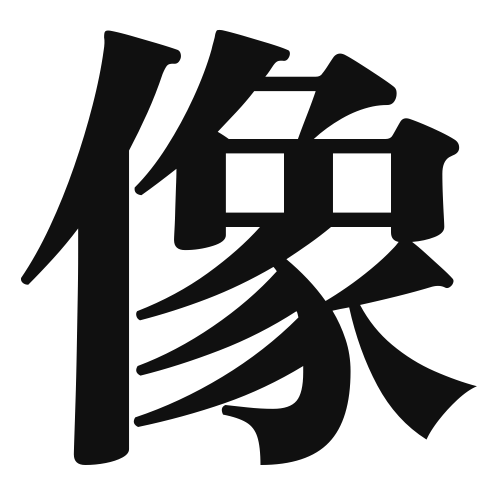1. Overview of Meaning
The kanji “像” (pronounced “zō” in Japanese) primarily means “image” or “statue.” It refers to a representation of something, often in a physical form, such as a sculpture or a picture.
2. Formation and Radical
The kanji “像” is a compound character that combines elements to convey its meaning. It is formed from the radical 亻 (which relates to a person) and the character 像 itself, which originally depicted an image or figure. This character is categorized as a 形声文字 (phonetic-ideographic character), where the left part indicates a semantic component and the right part provides a phonetic clue.
The radical of “像” is 亻, which is often associated with human-related concepts.
3. Examples of Usage
Common words and phrases that include “像” are:
- 像(ぞう) – statue
- 肖像(しょうぞう) – portrait
- 画像(がぞう) – image
Example sentences in daily conversation:
- この公園には美しい像があります。
There is a beautiful statue in this park. - 彼女の肖像画はとても有名です。
Her portrait is very famous.
4. Synonyms and Antonyms
Similar kanji with related meanings include:
- 映(えい) – to reflect or project, often used in the context of images or films.
- 姿(すがた) – form or figure, which emphasizes the physical appearance.
Antonyms include:
- 消(しょう) – to extinguish or disappear, which conveys the opposite of having a visible image.
5. Cultural and Historical Background
The kanji “像” has significant ties to Japanese culture, particularly in the context of art and religion. Statues of deities and historical figures are common in temples and shrines, reflecting the importance of physical representations in spiritual practices.
Proverbs and idiomatic expressions that include “像” are less common, but the concept of representation is often discussed in the context of art and identity, emphasizing how images can convey deeper meanings about culture and society.
